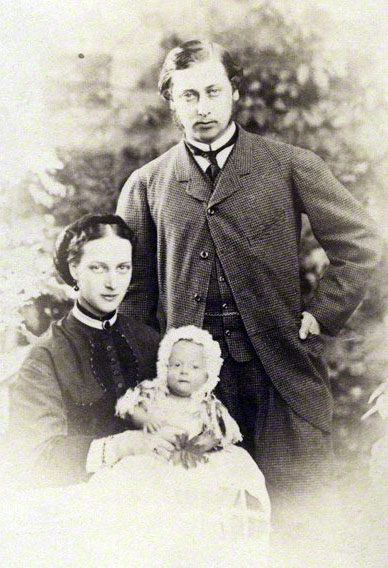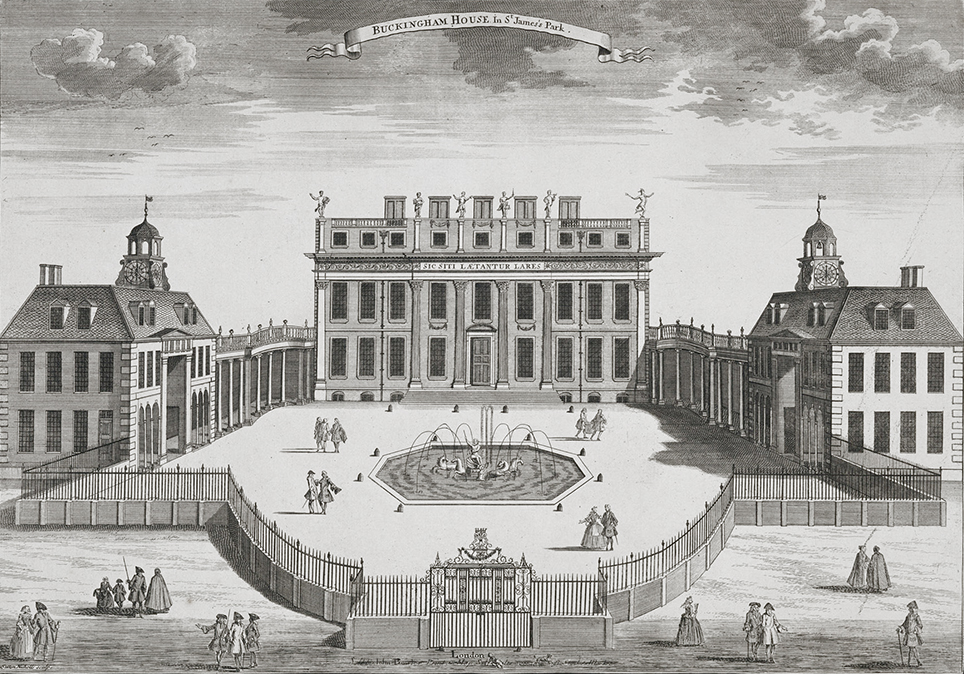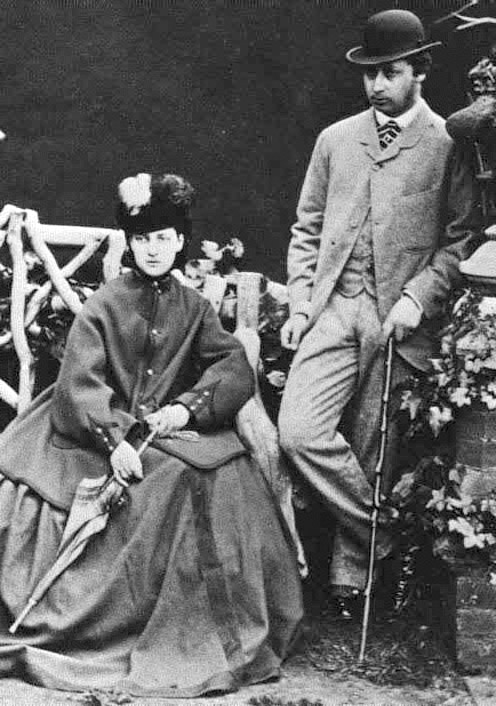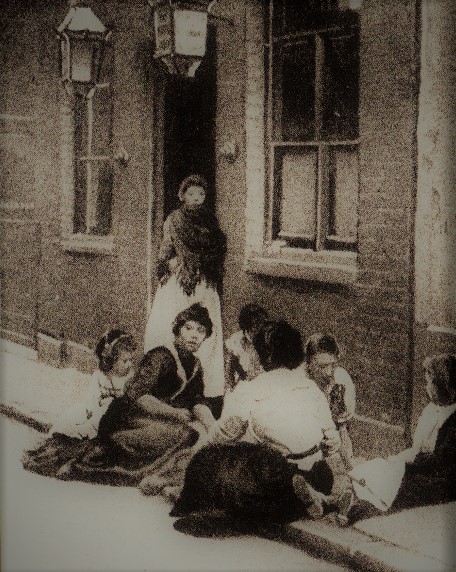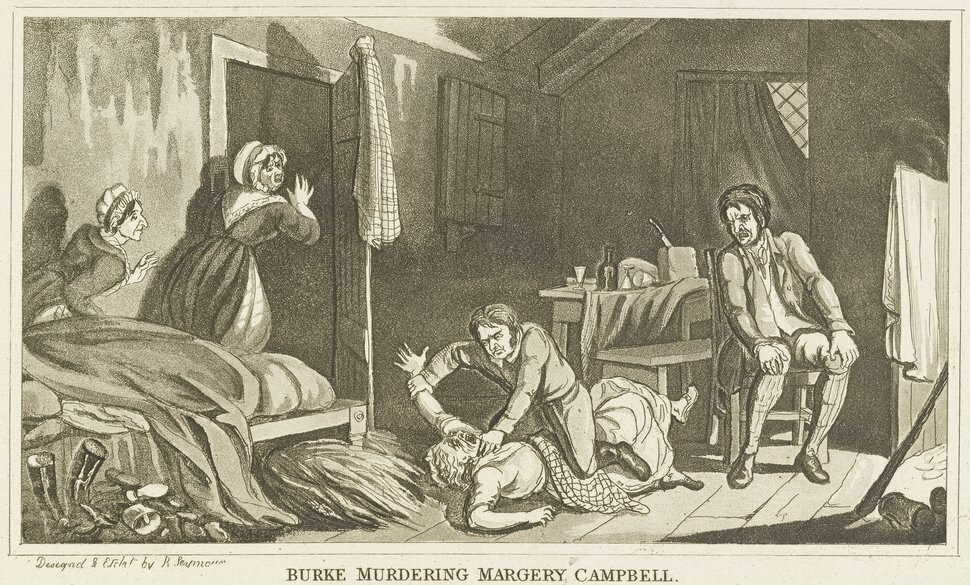|
Prince Albert Victor, Duke Of Clarence And Avondale
Prince Albert Victor, Duke of Clarence and Avondale (Albert Victor Christian Edward; 8 January 1864 – 14 January 1892) was the eldest child of the Prince and Princess of Wales (later King Edward VII and Queen Alexandra). From the time of his birth, he was second in the line of succession to the British throne, but did not become king or Prince of Wales because he died before both his father and paternal grandmother Queen Victoria. Albert Victor was known to his family, and many later biographers, as "Eddy". When he was young, he travelled the world extensively as a Royal Navy cadet, and as an adult, he joined the British Army, but did not undertake any active military duties. After two unsuccessful courtships, he became engaged to be married to his second cousin once removed Princess Victoria Mary of Teck in late 1891. A few weeks later, he died during a major pandemic. Mary later married his younger brother, the future King George V. Albert Victor's intellect, sexuality, a ... [...More Info...] [...Related Items...] OR: [Wikipedia] [Google] [Baidu] |
Duke Of Clarence And Avondale
Duke of Clarence and Avondale was a title awarded to Prince Albert Victor, a grandson of Queen Victoria, in the Peerage of the United Kingdom. Whilst there had previously been several creations of Duke of Clarence, Dukes of Clarence (and one Duke of Clarence and St Andrews), the sole creation of a dukedom of Clarence and Avondale was for Albert Victor, the eldest son of the Prince of Wales (later King Edward VII). This was the last Royal Dukedoms in the United Kingdom, royal dukedom to be created with two territorial designations. The Duke died of pneumonia in 1892 before his planned marriage so the title became extinct. He is buried in the Albert Memorial Chapel adjoining St George's Chapel, Windsor, beneath an Art Nouveau memorial designed by Sir Alfred Gilbert.Resting Places: The Burial Sites of More Than 14000 Famous Persons by Scott Wilson Duke of Clarence and Avondale (1890) , Prince Albert Victor, Duke of Clarence and Avondale, Prince Albert VictorHouse of Saxe-Coburg a ... [...More Info...] [...Related Items...] OR: [Wikipedia] [Google] [Baidu] |
1889–1890 Pandemic
The 1889–1890 pandemic, often referred to as the "Asiatic flu" or "Russian flu", was a worldwide respiratory viral pandemic. It was the last great pandemic of the 19th century, and is among the deadliest pandemics in history. The pandemic killed about 1 million people out of a world population of about 1.5 billion (0.067% of population). The most reported effects of the pandemic took place from October 1889 to December 1890, with recurrences in March to June 1891, November 1891 to June 1892, the northern winter of 1893–1894, and early 1895. According to researchers' estimates, excess mortality from Russian influenza in the Russian Empire for the period 1889–1890 could be from 60,000 to 90,000 people, with lethality from the virus, a little more than 0.2%. Although contemporaries described the pandemic as influenza and 20th-century scholars identified several influenza strains as the possible pathogen, several authors from the early 2020s suggest that it may have be ... [...More Info...] [...Related Items...] OR: [Wikipedia] [Google] [Baidu] |
Charles Longley
Charles Thomas Longley (28 July 1794 – 27 October 1868) was a bishop in the Church of England. He served as Bishop of Ripon, Bishop of Durham, Archbishop of York and Archbishop of Canterbury from 1862 until his death. Life He was born at Rochester, Kent, the fifth son of the late John Longley, Recorder of Rochester, and educated at Westminster School and Christ Church, Oxford, where he matriculated in 1812, graduating B.A. 1815 ( M.A. 1818), B.D. and D.D. 1829. At Christ Church, Longley was reader in Greek 1822, tutor and censor 1825–8, and proctor 1827. He was ordained in 1818, and was appointed vicar of Cowley, Oxford, in 1823. In 1827, he received the rectory of West Tytherley, Hampshire, and two years later he was elected headmaster of Harrow School. He held this office until 1836, when he was consecrated bishop of the new see of Ripon. In 1856 he became Bishop of Durham, and in 1860 he became Archbishop of York. In 1862, he succeeded John Bird Sumner as Archbis ... [...More Info...] [...Related Items...] OR: [Wikipedia] [Google] [Baidu] |
Archbishop Of Canterbury
The archbishop of Canterbury is the senior bishop and a principal leader of the Church of England, the Primus inter pares, ceremonial head of the worldwide Anglican Communion and the bishop of the diocese of Canterbury. The first archbishop was Augustine of Canterbury, the "Apostle to the English", who was sent to England by Pope Gregory the Great and arrived in 597. The position is currently vacant following the resignation of Justin Welby, the List of Archbishops of Canterbury, 105th archbishop, effective 7 January 2025.Orders in Council, 18 December 2024, page 42 During the vacancy the official functions of the office have been delegated primarily to the archbishop of York, Stephen Cottrell, with some also undertaken by the bishop of London, Sarah Mullally, and the bishop of Dover, Rose Hudson-Wilkin. From Augustine until William Warham, the archbishops of Canterbury were in full communion with the Catholic Church and usually received the pallium from the pope. During the ... [...More Info...] [...Related Items...] OR: [Wikipedia] [Google] [Baidu] |
Buckingham Palace
Buckingham Palace () is a royal official residence, residence in London, and the administrative headquarters of the monarch of the United Kingdom. Located in the City of Westminster, the palace is often at the centre of state occasions and royal hospitality. It has been a focal point for the British people at times of national rejoicing and mourning. Originally known as Buckingham House, the building at the core of today's palace was a large townhouse (Great Britain), townhouse built for the John Sheffield, 1st Duke of Buckingham and Normanby, Duke of Buckingham and Normanby in 1703 on a site that had been in private ownership for at least 150 years. It was acquired by George III in 1761 as a private residence for Charlotte of Mecklenburg-Strelitz, Queen Charlotte and became known as The Queen's House. During the 19th century it was enlarged by architects John Nash (architect), John Nash and Edward Blore, who constructed three wings around a central courtyard. Buckingham Pala ... [...More Info...] [...Related Items...] OR: [Wikipedia] [Google] [Baidu] |
British Monarch
The monarchy of the United Kingdom, commonly referred to as the British monarchy, is the form of government used by the United Kingdom by which a hereditary monarch reigns as the head of state, with their powers regulated by the British constitution. The term may also refer to the role of the royal family within the UK's broader political structure. The monarch since 8 September 2022 is King Charles III, who ascended the throne on the death of Queen Elizabeth II, his mother. The monarch and their immediate family undertake various official, ceremonial, diplomatic and representational duties. Although formally the monarch has authority over the governmentwhich is known as " His/Her Majesty's Government"this power may only be used according to laws enacted in Parliament and within constraints of convention and precedent. In practice the monarch's role, including that of Head of the Armed Forces, is limited to functions such as bestowing honours and appointing the prime m ... [...More Info...] [...Related Items...] OR: [Wikipedia] [Google] [Baidu] |
Prince Albert Of Saxe-Coburg And Gotha
Prince Albert of Saxe-Coburg and Gotha (Franz August Karl Albert Emanuel; 26 August 1819 – 14 December 1861) was the husband of Queen Victoria. As such, he was consort of the British monarch from Wedding of Queen Victoria and Prince Albert, their marriage on 10 February 1840 until Prince Albert of Saxe-Coburg and Gotha#Illness and death, his death in 1861. Victoria granted him the title Prince Consort in 1857. Albert was born in the Saxon duchy of Saxe-Coburg-Saalfeld to a family connected to many of Europe's ruling monarchs. At the age of 20, he married Victoria, his first cousin, with whom he had nine children. Initially, he felt constrained by his role as consort, which did not afford him power or responsibilities. He gradually developed a reputation for supporting public causes, such as educational reform and the abolition of slavery worldwide, and he was entrusted with running the Queen's household, office and estates. He was heavily involved with the organisation of the G ... [...More Info...] [...Related Items...] OR: [Wikipedia] [Google] [Baidu] |
Albert Edward, Prince Of Wales
Edward VII (Albert Edward; 9 November 1841 – 6 May 1910) was King of the United Kingdom and the British Dominions, and Emperor of India, from 22 January 1901 until Death and state funeral of Edward VII, his death in 1910. The second child and eldest son of Queen Victoria and Prince Albert of Saxe-Coburg and Gotha, Edward, nicknamed "Bertie", was related to royalty throughout Europe. He was Prince of Wales and heir apparent to the British throne for almost 60 years. During his mother's reign, he was largely excluded from political influence and came to personify the fashionable, leisured elite. He Wedding of Prince Albert Edward and Princess Alexandra, married Princess Alexandra of Denmark in 1863, and the couple had six children. As Prince of Wales, Edward travelled throughout Britain performing ceremonial public duties and represented Britain on visits abroad. His tours of North America in 1860 and of the Indian subcontinent in 1875 proved popular successes. Despite the ap ... [...More Info...] [...Related Items...] OR: [Wikipedia] [Google] [Baidu] |
Prince Albert Victor And Prince George
A prince is a male ruler (ranked below a king, grand prince, and grand duke) or a male member of a monarch's or former monarch's family. ''Prince'' is also a title of nobility (often highest), often hereditary, in some European states. The female equivalent is a princess. The English word derives, via the French word ''prince'', from the Latin noun , from (first) and (head), meaning "the first, foremost, the chief, most distinguished, noble ruler, prince". In a related sense, now not commonly used, all more or less sovereign rulers over a state, including kings, were "princes" in the language of international politics. They normally had another title, for example king or duke. Many of these were Princes of the Holy Roman Empire. Historical background The Latin word (older Latin *prīsmo-kaps, ), became the usual title of the informal leader of the Roman senate some centuries before the transition to empire, the ''princeps senatus''. Emperor Augustus established the forma ... [...More Info...] [...Related Items...] OR: [Wikipedia] [Google] [Baidu] |
Edward And Alix With Albert
Edward is an English male name. It is derived from the Anglo-Saxon name ''Ēadweard'', composed of the elements '' ēad'' "wealth, fortunate; prosperous" and '' weard'' "guardian, protector”. History The name Edward was very popular in Anglo-Saxon England, but the rule of the Norman and Plantagenet dynasties had effectively ended its use amongst the upper classes. The popularity of the name was revived when Henry III named his firstborn son, the future Edward I, as part of his efforts to promote a cult around Edward the Confessor, for whom Henry had a deep admiration. Variant forms The name has been adopted in the Iberian peninsula since the 15th century, due to Edward, King of Portugal, whose mother was English. The Spanish/Portuguese forms of the name are Eduardo and Duarte. Other variant forms include French Édouard, Italian Edoardo and Odoardo, German, Dutch, Czech and Romanian Eduard and Scandinavian Edvard. Short forms include Ed, Eddy, Eddie, Ted, Teddy and Ned. ... [...More Info...] [...Related Items...] OR: [Wikipedia] [Google] [Baidu] |
Jack The Ripper
Jack the Ripper was an unidentified serial killer who was active in and around the impoverished Whitechapel district of London, England, in 1888. In both criminal case files and the contemporaneous journalistic accounts, the killer was also called the Whitechapel Murderer and Leather Apron. Attacks ascribed to Jack the Ripper typically involved women working as prostitutes who lived in the slums of the East End of London. Their throats were cut prior to abdominal mutilations. The removal of internal organs from at least three of the victims led to speculation that their killer had some anatomical or surgical knowledge. Rumours that the murders were connected intensified in September and October 1888, and numerous letters were received by media outlets and Scotland Yard from people purporting to be the murderer. The name "Jack the Ripper" originated in the " Dear Boss letter" written by someone claiming to be the murderer, which was disseminated in the press. The letter is ... [...More Info...] [...Related Items...] OR: [Wikipedia] [Google] [Baidu] |
Serial Killer
A serial killer (also called a serial murderer) is a person who murders three or more people,An offender can be anyone: * * * * * (This source only requires two people) with the killings taking place over a significant period of time in separate events. Their psychological gratification is the Motive (law), motivation for the killings, and many serial murders involve sexual contact with the victims at different points during the murder process. The United States Federal Bureau of Investigation (FBI) states that the motives of serial killers can include anger, thrill killing , thrill-seeking, attention seeking, and financial gain, and killings may be Modus operandi, executed as such. The victims tend to have things in common, such as demographic profile, appearance, gender, or Race (human categorization), race. As a group, serial killers suffer from a variety of personality disorders. Most are often not adjudicated as insane under the law. Although a serial killer is a distinct cl ... [...More Info...] [...Related Items...] OR: [Wikipedia] [Google] [Baidu] |
